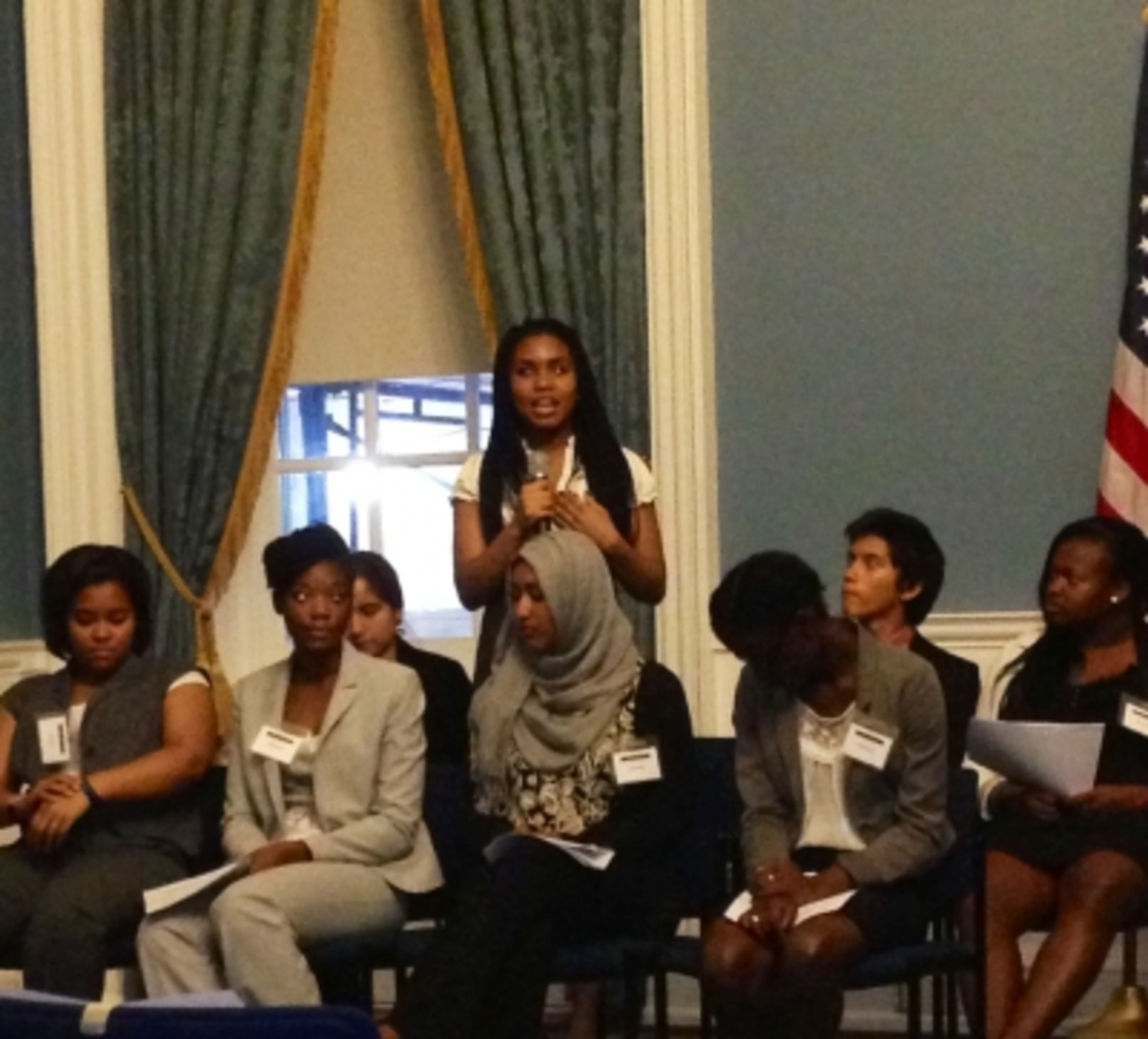Absenteeism: Make scanning random, say teens

Why do 40 percent of New York City high school students miss a month of school each year? The Center for Court Innovation went directly to the source and asked 17 high school students serving on its Youth Justice Board to research the issue. On Tuesday night at City Hall, students made ten recommendations to Chancellor Dennis Walcott on how to reduce chronic absenteeism. Suggestions ranged from taking a closer look at school security to providing peer mentors to students who are frequently absent.
The problem is huge: More than 20 percent of New York City students in grades kindergarten through 12 are chronically absent for a month out of each year --that's five percentage points higher than the national rate.
The Youth Justice Board brings “the voices of young people into issues that affect their lives,” said Steven, a rising senior at Benjamin Bennaker High School. The diverse group of teens represented all five boroughs. The students came up with their recommendations after a year of research that included meeting with student focus groups, teachers, parents, and policy makers. One issue they identified: metal detectors and security at the front door.
“Instead of scanning each student, security officers [should] randomly select students for scanning,” said Cheyenne, a student from James Madison High School. Her classmate, Amethyst, a rising senior, explained that many of her peers are deterred from showing up at school because “you have to be at school 20-30 minutes early to get to class on time” due to the long lines at the metal detectors. Cheyenne agreed, “every morning it feels like you are going to the airport. Even clips in your hair make [the metal detector] go off.”
Another big issue: more role models for teens. The Youth Board recommended that mentoring programs be made available in all schools. Aaliyah, a senior at Long Island City High School, said she was absent from school frequently due to health and family issues. She said that having a mentor from a summer youth program inspired her to change: the mentor “helped push me” and show that “my career is the most important thing in my life,” said Aaliyah. The Youth Board said mentorship doesn’t just come from adults, but peer mentorship is pivotal as well. Steven said his group of friends created “incentives to bring each other to school.” They created a “rule, if you don’t come to school, you can’t hang out with us after [school].”
The Youth Board now looks forward to a year of trying to implement their proposals. “I hope for at least citywide recognition, then statewide, then national,” said Steven.
Here are the 10 recommendations.
- Use “chronic absenteeism” rather than “truancy” to refer to attendance issues.
- Use individual attendance data in addition to school average daily attendance to more efficiently determine which students struggle with attendance.
- Support parents and foster parents to ensure that they are familiar with the education system and the importance of daily school attendance.
- Help teens draw connections between school attendance and their futures early in their education.
- Examine the impact of security procedures on student attendance.
- Develop clear, consistent expectations around student confidentiality.
- Offer additionally supportive services to students during transition periods.
- Prepare schools to support students who are returning from extended absences.
- Expand supports for over-age, under-credited students.
- Have mentoring programs available in all schools to give chronically absent students the attention and concern that will inspire commitment to attend school.
View an expanded version of the recommendations in the Youth Justice Board's booklet: "From Absent to Present."
Please Post Comments